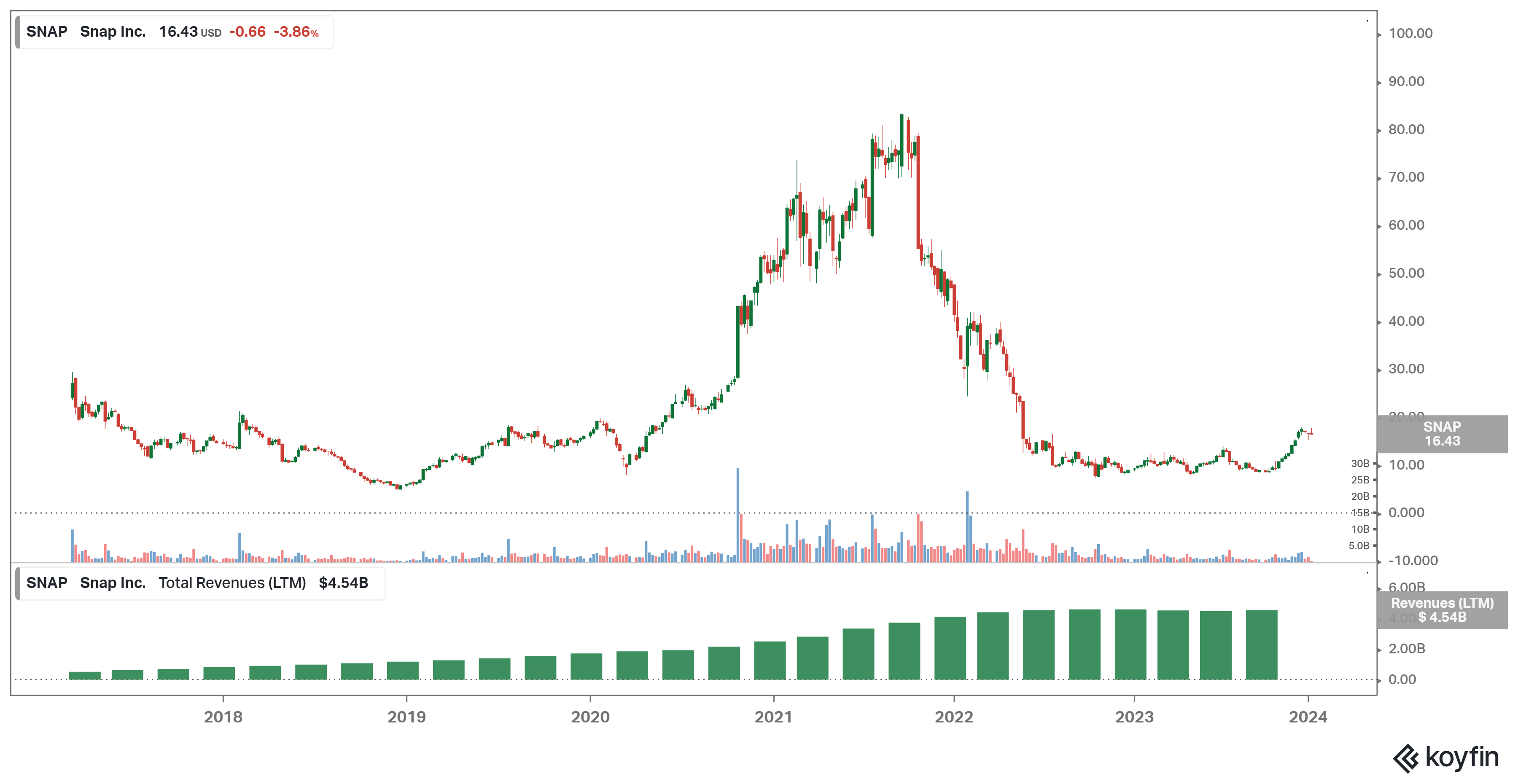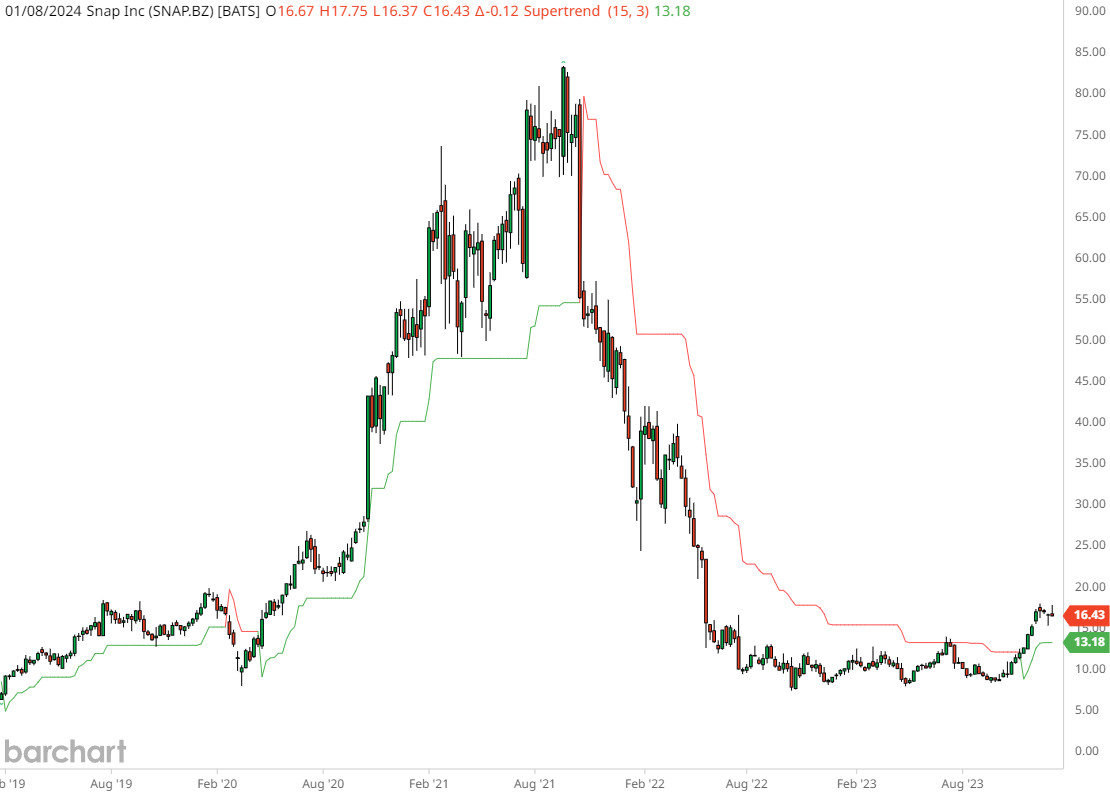Trading can be a confusing affair due to the amount of information that traders and investors have to wade through before generating any strategy. The good thing is that most of this information is irrelevant. The chart below is a variation on a chart that popped up briefly on my media feed. It shows the price action of SNAP along with its revenue growth.
 As can be seen, the price of SNAP collapses even as revenues continue to climb. This creates a difficulty for fundamental-based investors as the price is running contrary to a key metric of investing. It is therefore a source of friction in the decision-making process and each time we introduce a source of friction we introduce a potential source of error and therefore cost. The aim is to reduce friction as much as possible – in doing so we also simplify the decision-making process.
As can be seen, the price of SNAP collapses even as revenues continue to climb. This creates a difficulty for fundamental-based investors as the price is running contrary to a key metric of investing. It is therefore a source of friction in the decision-making process and each time we introduce a source of friction we introduce a potential source of error and therefore cost. The aim is to reduce friction as much as possible – in doing so we also simplify the decision-making process.
Compare the notion of trying to match fundamentals with share price performance with the chart below. The rules for this are simple – price above green line buy – price below red line sell. This is just a simple entry system and takes no account of the key concepts of market selection, or question of money management. But it does show how simple entry signals can be. Unfortunately, the majority of traders waste years of their lives looking for the perfect entry signal where none exists.
 An entry signal of any sort is little more than the equivalent of a referee blowing their whistle to start a game.
An entry signal of any sort is little more than the equivalent of a referee blowing their whistle to start a game.






Some traders like to use fundamentals as one of their filters. Do you think there is any merit to this? it would be an interesting exercise to see if stocks filtered on certain fundamental criteria produced any more tradable trends compared to the rest of the universe in a given year
No – I believe that price is the embodiment of all information known about the instrument. It tells me everything I need to know.